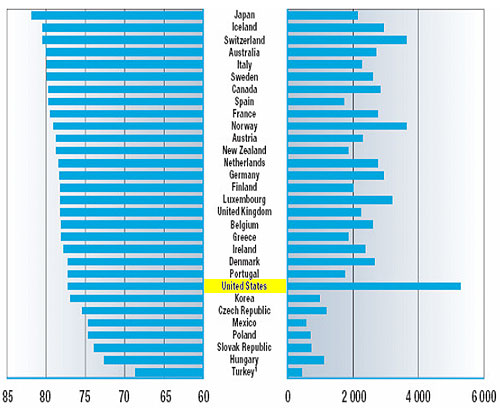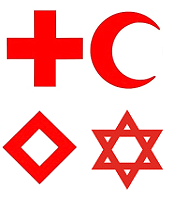|
|
 |
 |
|
Hans Calmeyer Righteous Gentile 1903-1972
“Dutch Schindler”
Lawyer for Life
|
|
|
 |
 |
|
WHY SAVE LIVES ?
|
|
 |
 |
|
Calmeyer was Pro-Life, strictly anti-abortion. His views on the importance of assisting those whose life was endangered by State action are well-documented on this website and in the biographies written and still to be written about this great saver of lives, whom in most cases he never met. Why save those lives, what value did they have?
|
 |
 |
|
We will talk in these pages about the value of human life. We believe that all human life is sacred, certainly to believers of some religions, but also beyond religious people. That includes Jews, Christians, Muslims, Hindus, and Atheists, even if many among all those groups do not have a strong foundation for respecting all life.
|
 |
 |
|
What is the Value of Life ? Different civilizations, societies, countries, cultures and individuals differ greatly.
|
 |
 |
|
A Life equips the Soul for immortality. Graham Hancock, Archaeologist-Historian
|
 |
 |
|
UNICEF reports that nearly 10 million children under 5 years old die each year of poverty conditions, 27,000 per day. For example, in Peruvian hinterlands, 1 in 5 children dies before the age of 10 because of relatively easily prevented worm diseases. What would be the cost of saving those lives? What would be the value of saving those lives? Is the fact that this cost is not now being expended or provided by anyone a signal that the value of those human lives is less than the cost? Does health care spending in advanced developed country act as an indicator of the value of human life there? Is the value of life related to personal productivity, specifically GPP or gross personal productivity? Then it would merely be tied to GDP.
The questions multiply. Is the sacrifice of one’s life for another life an indication of the value of the human life saved?
Why ask such a question in the first place? Societies generally operate on the basis of mutually agreed standards of the value and dignity of the lives of their members, otherwise the social fabric could break down and the strong would merely eradicate the weak. Nazi Germany is an example that is not quite as straightforward as it may seem: the Nazis kept the marginally useful people in virtual slavery, while militarizing many valuable people, establishing very clear racial preferences as to who could hold the most influential positions, and putting the most brilliant people into the sciences, all at the service of the all-powerful State.
All this was a value-based allocation of human resources, perhaps one of the most “managed” regimes of all time. The decision over life or death of human beings was a matter of State interests. Similar control over the disposition of life has been seen in Russia with Stalin and in many other strict dictatorships. That seeming disregard for the value of human life is based on prioritization of political and territorial objectives. The major religions have their prioritized objectives too: they may profess a more universal and egalitarian view of the value of human life, but for example, the Jesuits cooperated in, and indeed led, the murder of Mayans that would not convert to Catholicism, and Islam is just the most recent case of an entire religion threatening to kill anyone that does not submit and convert.
|
|
 |
 |
 |
 |
|
The value of life is not a fixed quantity around the world, it will depend on economic circumstances, available insurance coverage, risk-levels in a particular country or region, geographic accessibility, and many other social and religious factors. Is the life of an impoverished individual worth less than one resident in a rich country? Does religious value of the individual count? Surely the value of a life is larger in a society that chooses to fight for the survival, longevity, and dignity of life. The viewpoint matters: in a society judged as having too much population, the average value of individual life surely declines.
The economic and health environment are great contributors to the economic value of life. In Africa, the death of millions through wars and AIDS regularly decimate many populations, and it has become very hard to protect the value of life. The political environment can be decisive, since dictatorial power over life and death can be absolute as well as arbitrary, and applied at political will. Ultimate conclusions cannot be drawn, but it is unarguable that the value of paraplegics, Jews, dissidents, unproductive, aged, and retarded people was vastly lower under the Nazis than before Hitler took power.
|
|
|
|
 |
|
 |
 |
|
The subject of investigating the relative worth of life has been studied, as the chart below indicates. Measurements can be made in various countries in terms of life expectancies and spending on health per capita. Whether this convincingly captures the notion that an individual life has more respect in one country versus another is debatable. Clearly, poor countries and lower-income individuals will have much lower life expectancies and lower spending on health, whether a philosophically different value is placed on life there. How does a Jihadist value the life of a man or woman who blow themselves up for the Muslim cause?
|
 |
 |
|
The problem with the value of life in history is that some societies, Hans Calmeyer’s Germany (Jews considered non-persons throughout much of Europe), Africa’s Slaves (sold around the world by their Muslim captors), and Arabia’s women (worth half or less of the value assigned to men) being just 20th Century examples. And some of this mediaeval condition persist today, for example in Islam (and not just extreme Islam, but all normal Islam):
|
 |
 |
|
(1)Muslim women have to wear the veil.
(2) Islam encourages wife beating.
(3) The woman inherits only half what a man can inherit.
(4)The woman’s testimony is equal only to half of the man’s testimony.
(5)Muslim woman cannot have jobs outside their homes.
(6)Polygamy is strongly recommended.
(7)Men status is higher than that of the women. (Goes into the Eve problem and Christians)
(8) Muslim Women cannot have education.
(9)Women cannot share in the political life in their communities.
(10)Women cannot pray, fast, do Hajj or Ummrah during menstruation.
(11)Women are stoned to death for Adultery.
(12)Muslim women cannot marry Jewish or Christian men.
(13)Muslim women do not have the right to divorce their husbands.
(14)Compensation for the murder of a woman is half the going rate for men.
(15)For a woman to prove rape, four adult males of impeccable€¯ character must witness the incident.
(16)The legal age for girls to marry tends to be very young.
(17)Female circumcision, also called female genital mutilation.
(18) Muslim women are not allowed to drive.
(19) Typically, fathers win custody of boys over the age of six and girls after the onset of puberty.
(20) Women must be segregated form men in public, work and places of worship.
(21) Honor killings€¯ of women: Murders by husbands or male relatives of women suspected of disobedience, usually a sexual indiscretion or marriage against the family’s wishes.
(22) Morality Police keeps control on the behaviour of women.
(23) Women cannot travel freely except in the company of a male relative, mahram
|
 |
 |
|
The above principles are historical, cultural, ethnic, and outdated, but most of all, they are integral to the Koran and Sharia Law, with the added problem that Islam is a complete system of law, religion, government, enforced by intimidation or war.
|
|
|




